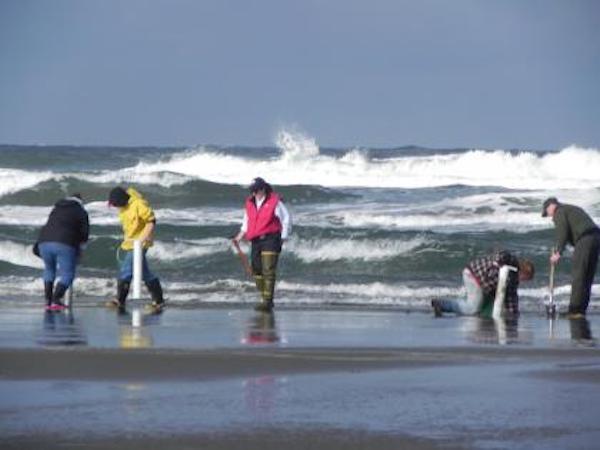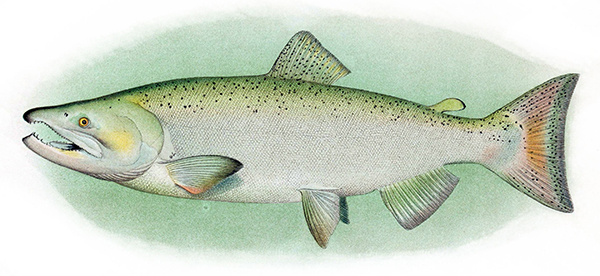WDFW and Partners Submit Application to Lethally Remove Sea Lions From Columbia River and Tributaries

by WA Department of Fish & Wildlife Staff
6-13-2019
Website
OLYMPIA - The Washington Department of Fish and Wildlife (WDFW), along with a consortium of state and tribal partners, today submitted an expanded application to lethally remove California and Steller sea lions preying on threatened and endangered salmon and steelhead runs in the Columbia River and its tributaries.
California sea lions -- and increasingly, Steller sea lions -- have been observed in growing numbers in the Columbia River basin, especially in the last decade. These sea lions prey heavily on salmon and steelhead runs listed under the Endangered Species Act (ESA), including thousands of fish at Bonneville Dam each year.
The impacts come at a time when many Chinook salmon runs are already at historic lows.
The recovery of sea lions since the passage of the Marine Mammal Protection Act (MMPA) in 1972 is a success story, said Kessina Lee, Region 5 director with WDFW. But that recovery has also brought challenges.
“The vast majority of these animals remain in coastal and offshore waters, but several hundred have established themselves in upriver locations,” Lee said. “Where salmon and steelhead numbers are low, any unmanaged increase in predation can cause serious problems.”
Predator management is a key part of a multi-faceted effort to restore salmon and steelhead populations in the Pacific Northwest.
“For decades, we’ve made strides in habitat restoration, hydropower policy, hatchery production, and fishery management, and we continue to work with our partners to further those initiatives,” Lee said. “Predator management remains an essential part of the equation.”
The application submitted to the National Marine Fisheries Service (NMFS) by WDFW and its partners is the first since Congress passed an amendment to the MMPA in December 2018. That amendment, spearheaded by the Pacific Northwest congressional delegation, passed with strong bipartisan support and offers greater flexibility to wildlife managers when determining if a sea lion should be lethally removed in waters that host ESA-listed runs of salmon or steelhead.
“Based on years of experience working within the bounds of the Marine Mammal Protection Act, the Columbia River fishing tribes contend that predator management is necessary to restore balance to the Columbia River system,” said Ryan Smith, chairman of the Columbia River Inter-Tribal Fish Commission. “Strong partnerships and collaboration with the states, northwest congressional delegation, federal authorities, and nongovernment organizations resulted in this amendment, which applies robust tools to manage sea lions in the lower Columbia River and recognizes tribal sovereignty in that management.”
WDFW and its partners have taken steps to deter California sea lions in the Columbia River basin for more than a decade, but non-lethal measures have proven largely ineffective, driving animals away for only short periods. These hazing measures appear similarly ineffective against Steller sea lions. Non-lethal measures continue to be used as a short-term deterrent when appropriate.
Wildlife managers have conducted lethal removal operations of California sea lions in the Columbia River basin since 2008, when NMFS first issued a letter of authorization under section 120 of the MMPA. From 2008-2019, wildlife managers removed a total of 219 California sea lions that met the federal criteria for removal below Bonneville Dam.
Steller sea lions have not previously been subject to lethal removal.
“Prior to this legislation, wildlife managers were severely limited in their ability to effectively manage sea lions in these areas,” Lee said. “Additional action is required to protect these troubled fish stocks before they are completely eliminated. This is an unfortunate, but necessary step in the salmon recovery process.”
If approved, WDFW expects to begin humanely removing animals under the terms of the expanded application beginning in 2020. The application is subject to a public comment period and review by NMFS. Members of the public can review the application at https://wdfw.wa.gov/sites/default/files/2019-06/MMPA-120f-application.pdf.
Other entities submitting the application with WDFW include the Oregon Department of Fish and Wildlife, the Idaho Department of Fish and Game, the Nez Perce Tribe, the Confederated Tribes of the Umatilla Indian Reservation (CTUIR), the Confederated Tribes of the Warm Springs Reservation of Oregon (CTWSR), The Confederated Tribes and Bands of the Yakama Nation, and the 3.6.D Committee, which includes ODFW, CTUIR, CTWSR, the Confederated Tribes of the Grand Ronde Community, and the Confederated Tribes of the Siletz Indians of Oregon.


